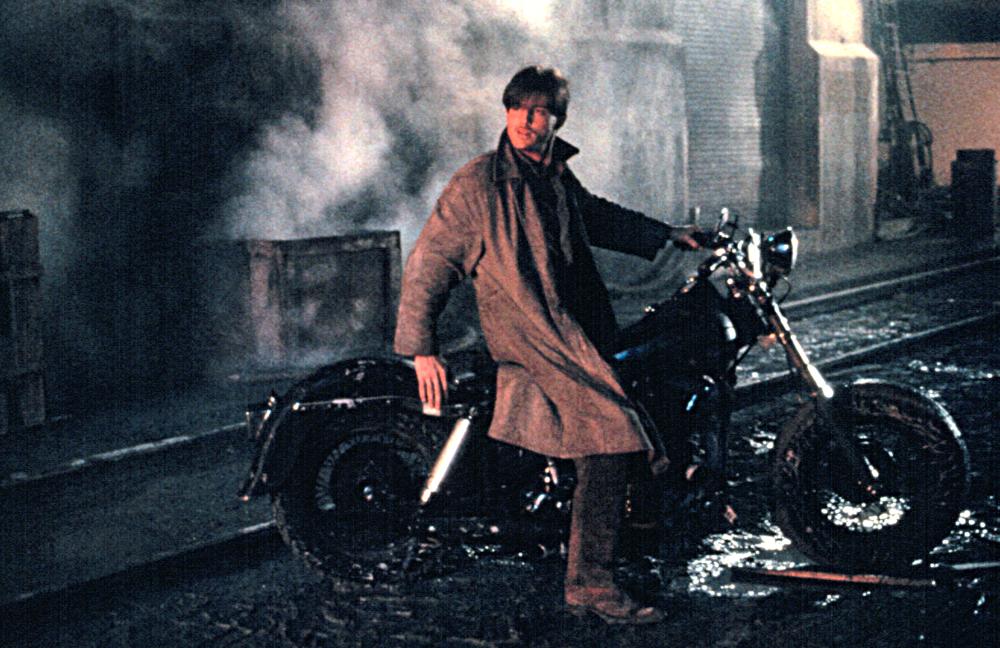 |
| Courtesy of Universal Pictures |
“Another time,
another place.”
Walter’s Hill’s rock
and roll fable is a cinematic sojourn into an era in which films of wonder and
imagination were made real by taking chances on unusual concepts.
Blending neo-noir sensibilities with musical tropes, Streets of Fire
creates a world within our reality, a fever dream of street gangs, violence,
and star-crossed romance. The result is one of the most visionary
American films ever created. Featuring a veritable who’s who of 80’s
talent, an unforgettable soundtrack and near ethereal cinematography, this is
one of the many icons of the decade.
Tom Cody is a veteran
who returns to Richmond and is drawn into a conflict with a local gang who have
kidnapped his former lover. As Tom commits himself to rescuing his former
flame, he begins to realize that some things will never be what they were ever
again. Michael Pare stars at Cody, and while his performance is adequate,
he is out shadowed by the supporting cast, particularly Rick Moranis and
Amy Madigan. Willem Dafoe gives one of his earliest and best performances
as the villainous Raven, partnered with a vicious Lee Ving (Clue).
Additionally, Rick Rossovich and Richard Lawson star as the law caught between
the near mythological forces at work on the streets. Rounding out the cast is
Diane Lane as Ellen Aim, Cody’s lost love and Mykelti Williamson and Grand
Bush as members of the Sorels, a Motown doo wap group who get swept up in the
conflict.
 |
| Courtesy of Universal Pictures |
Music is one of the
essential ingredients. Hill used real musicians and combined several
elements to allow the artists to make two original songs for the soundtrack, Nowhere
Fast and Tonight is What it Means to be Young, both of which are
both stunning and perfect accoutrements to Hill’s vision. The other
element is Andrew Lazlo’s vibrant cinematography. Lazlo frames every sequence as if it is
coming right from the page of a fable or comic book, using fire kissed set pieces
to fuse the viewer’s reality with the port in a storm of Richmond, a place of
rumor and supposition poised to explode at any moment and the result is an
excursion into a place between dreams and nightmares.
Ultimately Streets
of Fire is a flawed but fun trip down a unique, one-of-a-kind rabbit
hole. Hill’s ambition is evident in every single frame. Very few films
have managed to create a world one step removed from reality and succeeded on
so many levels. The sounds, the look, the costumes, everything works in
concert to transport the audience not only into Richmond, but into the rhythm
of the world within it, where the streets burn, damsels sing fierce power
ballads, and light and darkness forever battle for supremacy.
 |
| Courtesy of Universal Pictures |
Now available for
digital rental or on a gorgeous UHD transfer from Shout Factory, Streets of
Fire was a commercial failure upon release, but over the years it has deservingly
attained cult status. A one two punch to both the heart and
imagination, Walter’s blemished, but furious opus captures the imagination from
the film’s opening seconds to its jaw dropping musical finale, truly a once in
a lifetime cinematic experience.
-Kyle Jonathan



